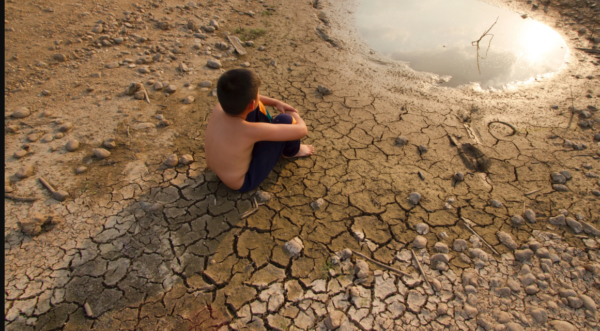Dr Seema Javed
After cooler-than-usual summers in the northwest region of India -Heat wave gripped parts of Punjab, Haryana, Chandigarh, Delhi, Jammu and Kashmir, Himachal Pradesh, and isolated pockets of East Rajasthan, South Uttar Pradesh, and Northwest Madhya Pradesh which is now being followed by northeastern Arunachal Pradesh, Guwahati etc.
Normally North west India remains susceptible to heatwaves until the monsoon arrives over the region. These Days temperatures have been skyrocketing with mercury settling past 44-degree Celsius mark. Parts of Central and East India were also seen grappling with heatwave conditions.
The primary reason for missing heatwaves this year was due to early arrival of Monsoon. Followed by spells of rain and thundershowers. However, after reaching Mumbai and many parts of Northeast India, the progress stalled, and the frequency of western disturbances also reduced significantly.

According to experts climate change has led to increased severity of heatwaves across the region. The ongoing weather conditions are directly related to the impact of global warming. The searing heatwave became even more uncomfortable with the rise in humidity. Humidity has become more prominent due to global warming. A slight increase in humidity levels add 2-4 degrees Celsius, increasing discomfort. Morbidity has also risen because of these combined factors. The northern plains were used to dry conditions.
Dr K J Ramesh, Former Director General, India Meteorological Department (IMD) said that-“Climate change has led to a rise in moisture uploading in the southeast atmosphere. With the rise of every one degree of warming, the capacity of the air to hold water vapour has increased by 7%. All the hilly states have seen two to four degrees of warming.”
Climate change has increased the variability of extreme weather events, especially heatwave over India. This does not just increase the discomfort but also poses a challenge to the country’s health infrastructure. A prolonged exposure to extreme temperatures along with high humidity levels often causes heat strokes, mainly impacting the poor, outdoor workers, children, and the elderly.
“There has been a continuous flow of hot and dry winds over the Indo-Gangetic plains, which include most parts of Gujarat, Rajasthan, Madhya Pradesh, Bihar, Jharkhand, and the entire northern plains. The heat is being transported from the Thar desert, where temperatures have already been settling near 48 degrees Celsius, reaching up to eastern and central parts of the country. The continuous flow of these dry north-westerly winds is also not allowing the Monsoon further,” said Mahesh Palawat, Vice President- Meteorology and Climate Change, Skymet Weather.
According to a latest study on heatwaves, ‘Shifting of the Zone of Occurrence of Extreme Weather Event—Heat Waves’, the heatwave conditions during June in the three decades(1991-2020) across the western coastal region were absent in the period of 1991-2000.
Migration of heatwaves: The observed migration of heatwave occurrences at places previously less susceptible is a clear signal of the broadening climate crisis. The west coastal region has seen an increase in heat wave locations starting with the Konkan Coast up to Kerala. Heatwaves were concentrated in central India during 2001-2010 that appeared to shift towards the Southern region during 2011-2020. States such as Jammu Kashmir, Himachal Pradesh, Uttrakhand, Ladakh . Arunachal Pradesh state has newly observed heatwave conditions thereafter between 2001-2010. The emergence of heatwave events over Kerala was seen during 2011-2020. The heatwave instances over North India (Delhi, Punjab, Haryana, Himachal Pradesh, Uttarakhand) increased every 10 years from 1991-2020.
Altered Weather Patterns: Meteorologists are observing changes in wind and pressure patterns, including a strong high-pressure zone over Western Russia diverting winds over India and delaying monsoon activity. By the end of May, a strong high pressure had developed over Western Russia, which is also seen as an atmospheric blocking pattern. It was so strong that it tweaked wind patterns over the Indian region, paving the way for dry and hot winds from Afghanistan and Pakistan. This strong and dry air had shut down the formation of clouds and weakened the monsoon circulations and finally stopped the onset progression of the monsoon,” said Dr Akshay Deoras, Research Scientist, National Centre for Atmospheric Science, University of Reading, UK.
Weakened Pre-Monsoon Winds: Decrease in wind speed over northern India during pre-monsoon months (March–May) are reducing the influx of cooler air. Conversely, stronger wind speeds over the southern parts of India suggest more efficient moisture transport, corroborating the observed rise in specific humidity. This interplay between weakened winds and dry conditions in the north versus strengthened winds and moist conditions in the south suggests a shifting climatic pattern.
 Jubilee Post News & Views
Jubilee Post News & Views





